News stories from the field:
- 2nd Annual AMHC Symposium – “Moving Forward: Decreasing car use among teenagers”
This international multidisciplinary event showcased current research and practice in teen mobility, active transport, the effects of the built environment and climate change, and youth engagement. Links to recorded video presentations and graphics can be found on the Symposium page and the AMHC YouTube Channel.
- “A New Direction: Our Changing Relationship with Driving and the Implications for America’s Future.”
Original Article at US PIRG
The Driving Boom—a six decade-long period of steady increases in per-capita driving in the United States—is over.
Americans drive fewer total miles today than we did eight years ago, and fewer per person than we did at the end of Bill Clinton’s first term. The unique combination of conditions that fueled the Driving Boom—from cheap gas prices to the rapid expansion of the workforce during the Baby Boom generation—no longer exists. Meanwhile, a new generation—the Millennials—is demanding a new American Dream less dependent on driving.
- Caution! Paradigm Shift Ahead: “Adolescent mobility health”
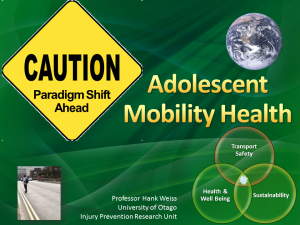 This is a multimedia presentation by Professor Hank Weiss, delivered Tuesday, October 02, 2012 at the Safety 2012 World Conference (47 min).
This is a multimedia presentation by Professor Hank Weiss, delivered Tuesday, October 02, 2012 at the Safety 2012 World Conference (47 min).Adolescents warrant special attention. From a road safety perspective, they carry the largest crash and morbidity/mortality risk of any age group. This has led to considerable research and safety programs, but these efforts have plateaued in many countries and remain fixed within a road safety perspective. From a broader perspective, little has been done about the many non-traffic health risks related to teen driving (increased drug and alcohol use, anti-social behaviour, sexually transmitted infections, inactivity and obesity). From a sustainable transport perspective, a contemporary imperative, teens are where the transition from non-driver to driver takes place; an opportune time for interventions to minimize environmental harms.
Professor Weiss introduces a new paradigm termed ‘mobility health’ to bridge the siloed domains of safety, adolescent health and sustainable mobility. In this passionate speech to an international audience, he advocates changing the current narrow paradigm of adolescent road safety to a cross-level/cross-disciplinary, more potent, timely and healthy vision of less driving through mobility modal shift from cars to active and public transport. - Gen Y Eschewing V-8 for 4G – Bloomberg
- Development Banks Invest Billions on Sustainable Transport
Original article at www.slocat.net
RIO DE JANEIRO, BRAZIL (20 June, 2012 )—The eight largest multilateral development banks (MDBs) announced today that they will invest US$175 billion to finance more sustainable transportation systems over the coming decade, boosting equitable economic development and protecting the environment and public health across the developing world. The pledge by the Asian Development Bank, the World Bank and six other MDBs was made at the start of United Nations Conference on Sustainable Development (also known as Rio+20).
- Transportation and the New Generation: Why Young People Are Driving Less and What It Means for Transportation Policy
Original article by Benjamin Davis and Tony Dutzik, Frontier Group; Phineas Baxandall, U.S. PIRG Education Fund
“America has long created transportation policy under the assumption that driving will continue to increase at a rapid and steady rate. The changing transportation preferences of young people – and Americans overall – throw that assumption into doubt. Policy-makers and the public need to be aware that America’s current transportation policy – dominated by road building – is fundamentally out-of-step with the transportation patterns and expressed preferences of growing numbers of Americans. It is time for policy-makers to consider the implication of changes in driving habits for the nation’s transportation infrastructure decisions and funding practices, and consider a new vision for transportation policy that reflects the needs of 21st century America.”
- Going Bussed: Economy And Tuition Fees Drive The Young Away From The Car
Gwyn Topham, Tom Midlane and James Brilliant, guardian.co.uk
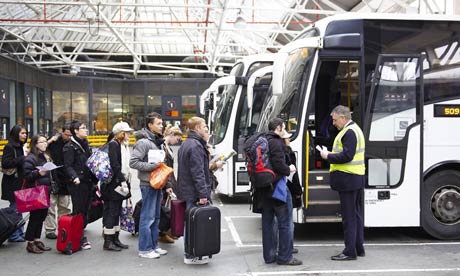 Sales of coach and train discount cards surge as driving becomes a minority pursuit among cash-strapped students. Photograph: Micha Theiner/City AM/Rex Features
Sales of coach and train discount cards surge as driving becomes a minority pursuit among cash-strapped students. Photograph: Micha Theiner/City AM/Rex FeaturesA generation of students facing higher tuition fees and lower job prospects appears to be embracing the mixed joys of budget travel in rising numbers – with the teenage dream of passing the test and driving a car now an increasingly unaffordable, minority pursuit.
Operators report that the traditional staples of budget travel, the young person’s rail and coach cards, are being purchased in record numbers.
National Express, Britain’s largest coach operator, reported a surge in sales of coach and regional bus discount cards last year, with 36% more being sold year on year.
- 2:50 am
Cherie Howie & Russell Blackstock NZherald.co.nz
January 8, 2012. 2:50 am. One life lost. Another changed forever…
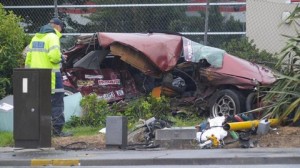 “A young man died yesterday when his souped-up car was completely crushed in a high-speed smash – allegedly T-boned by a boy racer aged just 15.
“A young man died yesterday when his souped-up car was completely crushed in a high-speed smash – allegedly T-boned by a boy racer aged just 15.Shaun FitzPatrick, 22, had signed up to participate in the controversial CannonBall Run street-legal car rally yesterday, in which 270 amateur racers circle Auckland in everything from Suzukis to Ferraris.
But at 2.50am yesterday morning, just hours before the rally was due to start, the Pakuranga man was killed by one of several cars racing through industrial Mt Wellington.
A stolen Subaru Forester ran a red light on Carbine Rd and hit FitzPatrick, who had right of way, shunting his car through an iron lamp-post and into a fence.”
- Millennials Prefer Car “Access Over Ownership”
From The City Fix and Zipcar
Zipcar, Inc., the world’s leading car-sharing network, released its second annual independent study of Millennials (18-34-year olds), which examines this generation’s attitudes toward personal transportation and car ownership. Millennials are an important segment for Zipcar, comprising more than half of all members. Millennials account for about 23 percent of the general population, according to the 2010 US Census.
- 55 percent have actively made an effort to drive less, compared to 45 percent in the same 2010 study
- 78 percent say owning a car is difficult due to high costs of gas and maintenance
- 53 percent would participate in a car-sharing service, like Zipcar – mobility and convenience is still important
- Millennials are the most likely age group to participate in the “sharing economy” (67 percent would participate in media sharing and 49 percent in home/vacation sharing)
- 40 percent say they would participate to save more money for retirement or buying a home
- “I Love Me Carz an Burnouts”
– By Hamish McNeilly
Otago Daily TimesThe following is a news story about the implementation of a new New Zealand Law aimed at controlling “boy racer” burnout behavior. It reminds us of the sub-culture of youth, active in many parts of the world, for whom the automobile is an important outlet for adolescent exuberance and sometimes rage. What is known about these cultures? What drives some youth to partake in these behaviours and not others? What harm is done? What works to refocus the emotions on display?
– Editor
 A 1982 engineless Toyota Corolla DX parked in a Milton garage will become the first car to be crushed under boy racer legislation. Self-confessed car lover Karn Clarrie Forrest, of Milton, will have his car confiscated and crushed, after his third conviction for driving a vehicle with a sustained loss of traction.
A 1982 engineless Toyota Corolla DX parked in a Milton garage will become the first car to be crushed under boy racer legislation. Self-confessed car lover Karn Clarrie Forrest, of Milton, will have his car confiscated and crushed, after his third conviction for driving a vehicle with a sustained loss of traction.Despite initially agreeing to an interview with the Otago Daily Times, the 18-year-old remained elusive after appearing before Judge Stephen O’Driscoll in the Balclutha District Court, sitting in Gore, yesterday. Forrest was stopped by police after performing two “doughnuts” in his car on State Highway 1, north of Milton, on September 29.
Forrest was stopped by police after performing two “doughnuts” in his car on State Highway 1, north of Milton, on September 29. A passenger in that vehicle, Rhiane Dunn (18), of Milton, said his flatmate would be devastated to have the car he was doing up crushed.
Forrest, in his expletive-laden Facebook profile, wrote someone had “narked” on him for doing doughnuts, and he was planning to put a turbocharger in the Toyota. “i love me carz an burnouts,” he wrote.



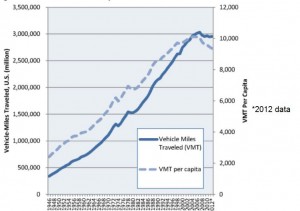

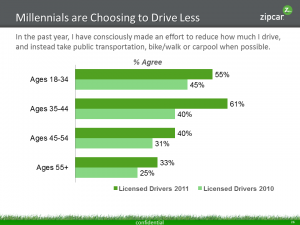
Comments